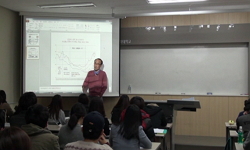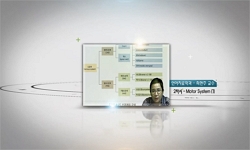PURPOSE: Cerebral palsy is a common cause of disability in children, requiring constant rehabilitation. Improving balance in children with cerebral palsy helps to alleviate daily movement and the quality of life. This study examines a program that com...
http://chineseinput.net/에서 pinyin(병음)방식으로 중국어를 변환할 수 있습니다.
변환된 중국어를 복사하여 사용하시면 됩니다.
- 中文 을 입력하시려면 zhongwen을 입력하시고 space를누르시면됩니다.
- 北京 을 입력하시려면 beijing을 입력하시고 space를 누르시면 됩니다.

저항성 운동과 그룹 운동을 병합한 프로그램이 뇌성마비 아동의 균형능력, 파악력 및 삶의 질에 미치는 영향 = The Effect of a Program Combining Resistance Exercise and Group Exercise on Balance, Grip Strength, and Quality of Life of Children with Cerebral Palsy
한글로보기https://www.riss.kr/link?id=A107157583
- 저자
- 발행기관
- 학술지명
- 권호사항
-
발행연도
2020
-
작성언어
-
- 주제어
-
등재정보
KCI등재
-
자료형태
학술저널
-
수록면
75-85(11쪽)
-
KCI 피인용횟수
0
- DOI식별코드
- 제공처
-
0
상세조회 -
0
다운로드
부가정보
다국어 초록 (Multilingual Abstract)
PURPOSE: Cerebral palsy is a common cause of disability in children, requiring constant rehabilitation. Improving balance in children with cerebral palsy helps to alleviate daily movement and the quality of life. This study examines a program that combines Resistance Exercise and Group Exercise, and investigates the effect on trunk control ability, balance ability, maximum grip strength, and quality of life of children with cerebral palsy.
METHODS: Totally, 9 children with cerebral palsy participated in this study. Resistance exercise was performed for 8 weeks, 40 minutes every day. Group Exercise was conducted for 8 weeks, 40 minutes each Sunday. All participants were evaluated by the Korean version of the trunk control measurement scale, pediatric reach test, grip strength test, and KIDSCREEN-52.
RESULTS: The trunk control ability was significantly improved in all subcategories (p < .05). In the pediatric reach test, the left and right directions were significantly improved (p < .05). Maximum grip strength was significantly improved in both hands (p < .05). The quality of life significantly improved in total score, physical well-being, general moods, self-perception, autonomy, relationship with parents, and home life (p < .05).
CONCLUSION: Considering the encouraging results, we propose to use Resistance Exercise and Group Exercise as programs other than rehabilitation treatment in hospitals, to improve motor function and quality of life of children with cerebral palsy.
참고문헌 (Reference)
1 윤창교, "다른 앉은 자세가 뇌성마비 환자의 복횡근 두께와 앉기 균형에 미치는 영향" 한국전문물리치료학회 21 (21): 11-19, 2014
2 신승오, "뇌성마비 아동의 근력과 호흡기능의 상관관계" 대한물리의학회 11 (11): 123-130, 2016
3 Auld ML, "“Strong and steady”: a community-based strength and balance exercise group for children with cerebral palsy" 36 (36): 2065-2071, 2014
4 Bartlett D, "Validity and reliability of a pediatric reach test" 15 (15): 84-92, 2003
5 Palisano RJ, "Validation of a model of gross motor function for children with cerebral palsy" 80 (80): 974-985, 2000
6 Shin SO, "Upper extremity resistance exercise with elastic bands for respiratory function in children with cerebral palsy" 29 (29): 2077-2080, 2017
7 Katz-Leurer M, "The effects of a 'home-based' task-oriented exercise programme on motor and balance performance in children with spastic cerebral palsy and severe traumatic brain injury" 23 (23): 714-724, 2009
8 Moreno MA, "The effect of proprioceptive neuromuscular facilitation techniquesKabat Method-on maximum respiratory pressure" 18 (18): 53-61, 2005
9 Kim BJ, "The effect of group exercise program on the self-efficacy and activities of daily living in adults with cerebral palsy" 29 (29): 2184-2189, 2017
10 Verheyden G, "The Trunk Impairment Scale : a new tool to measure motor impairment of the trunk after stroke" 18 (18): 326-334, 2004
1 윤창교, "다른 앉은 자세가 뇌성마비 환자의 복횡근 두께와 앉기 균형에 미치는 영향" 한국전문물리치료학회 21 (21): 11-19, 2014
2 신승오, "뇌성마비 아동의 근력과 호흡기능의 상관관계" 대한물리의학회 11 (11): 123-130, 2016
3 Auld ML, "“Strong and steady”: a community-based strength and balance exercise group for children with cerebral palsy" 36 (36): 2065-2071, 2014
4 Bartlett D, "Validity and reliability of a pediatric reach test" 15 (15): 84-92, 2003
5 Palisano RJ, "Validation of a model of gross motor function for children with cerebral palsy" 80 (80): 974-985, 2000
6 Shin SO, "Upper extremity resistance exercise with elastic bands for respiratory function in children with cerebral palsy" 29 (29): 2077-2080, 2017
7 Katz-Leurer M, "The effects of a 'home-based' task-oriented exercise programme on motor and balance performance in children with spastic cerebral palsy and severe traumatic brain injury" 23 (23): 714-724, 2009
8 Moreno MA, "The effect of proprioceptive neuromuscular facilitation techniquesKabat Method-on maximum respiratory pressure" 18 (18): 53-61, 2005
9 Kim BJ, "The effect of group exercise program on the self-efficacy and activities of daily living in adults with cerebral palsy" 29 (29): 2184-2189, 2017
10 Verheyden G, "The Trunk Impairment Scale : a new tool to measure motor impairment of the trunk after stroke" 18 (18): 326-334, 2004
11 홍성도, "The KIDSCREEN-52 Quality of Life Measure for Children and Adolescents (KIDSCREEN-52-HRQOL): Reliability and Validity of the Korean Version" 대한의학회 22 (22): 446-452, 2007
12 Fauzi AA, "Structured home-based exercise program for improving walking ability in ambulant children with cerebral palsy" 12 (12): 161-169, 2019
13 Toder DS, "Respiratory problems in the adolescent with developmental delay" 11 (11): 617-631, 2000
14 Bohannon RW, "Reference values for extremity muscle strength obtained by hand-held dynamometry from adults aged 20 to 79 years" 78 (78): 26-32, 1997
15 Bax M, "Proposed definition and classification of cerebral palsy" 47 (47): 571-576, 2005
16 Carlberg EB, "Postural dysfunctionin children with cerebral palsy: some implications for therapeutic guidance" 12 : 221-228, 2005
17 Maher CA, "Physical activity predicts quality of life and happiness in children and adolescents with cerebral palsy" 38 (38): 865-869, 2016
18 Tecklin JS, "Pediatric physical therapy" Lippincott Williams & Wilkins 2008
19 Novak I, "Occupational therapy home programs for cerebral palsy : double-blind, randomized, controlled trial" 124 (124): e606-e614, 2009
20 Cooper R, "Objectively measured physical capability levels and mortality : systematic review and meta-analysis" 341 : c4467-, 2010
21 Huang PC, "Motion analysis of throwing Boccia balls in children with cerebral palsy" 35 (35): 393-399, 2014
22 Ravens-Sieberer U, "KIDSCREEN52 quality-of-life measure for children and adolescents" 5 (5): 353-364, 2005
23 Brogren E, "Influence of two different sitting positions on postural adjustments in children with spastic diplegia" 43 (43): 534-546, 2001
24 Bragagnolo R, "Handgrip strength and adductor pollicis muscle thickness as predictors of postoperative complications after major operations of the gastrointestinal tract" 6 (6): e21-e26, 2011
25 Schlu¨ssel MM, "Hand grip strength test and its use in nutritional assessment" 21 (21): 233-235, 2008
26 De Smet L, "Grip force reduction in patients with tennis elbow : influence of elbow position" 10 (10): 229-231, 1997
27 Damiano DL, "Functional outcomes of strength training in spastic cerebral palsy" 79 (79): 119-125, 1998
28 Saavedra S, "Eye hand coordination in children with cerebral palsy" 192 (192): 155-165, 2009
29 Sullivan PE, "Electromyographic activity of shoulder muscles during unilateral upper extremity proprioceptive neuromuscular facilitation patterns" 60 : 283-288, 1980
30 Tarakci D, "Effects of Nintendo Wii-Fit® video games on balance in children with mild cerebral palsy" 58 (58): 1042-1050, 2016
31 Tekin F, "Effectiveness of Neuro-Developmental Treatment(Bobath Concept)on postural control and balance in Cerebral Palsied children" 31 (31): 397-403, 2018
32 Shumway-Cook A, "Effect of balance training on recovery of stability in children with cerebral palsy" 45 (45): 591-602, 2003
33 Frank C, "Dynamic neuromuscular stabilization & sports rehabilitation" 8 (8): 62-, 2013
34 de Araújo PA, "Combining balance-training interventions with other active interventions may enhance effects on postural control in children and adolescents with cerebral palsy: A systematic review and meta-analysis" 2019
35 Harburn KL, "Clinical applicability and test-retest reliability of an external perturbation test of balance in stroke subjects" 76 (76): 317-323, 1995
36 Aisen ML, "Cerebral palsy : Clinical care and neurological rehabilitation" 10 : 844-852, 2011
37 Koman LA, "Cerebral palsy" 363 (363): 1619-1631, 2004
38 Noles SW, "Body image, physical attractiveness, and depression" 53 (53): 88-94, 1985
39 Ferdjallah M, "Analysis of postural control synergies during quiet standing in healthy children and children with cerebral palsy" 17 (17): 203-210, 2002
40 Bobath B, "Adult hemiplegia: evaluation and treatment" Elsevier Health Sciences 1990
41 Engardt M, "Adapted exercise important after stroke. Acute and long-term effects of different training programs" 102 (102): 392-, 2005
42 Rosenbaum P, "A report:the definition and classification of cerebral palsy April 2006 [published correction appears in Dev Med Child Neurol. 2007 Jun;49(6):480]" 109 : 8-14, 2007
43 Claxton DB, "A question of balance" 77 (77): 32-37, 2006
44 Wang TH, "A home-based program using patterned sensory enhancement improves resistance exercise effects for children with cerebral palsy : a randomized controlled trial" 27 (27): 684-694, 2013
45 Heyrman L, "A clinical tool to measure trunk control in children with cerebral palsy : the Trunk Control Measurement Scale" 32 (32): 2624-2635, 2011
동일학술지(권/호) 다른 논문
-
- 대한물리의학회
- ( Geun-woo Kim )
- 2020
- KCI등재
-
- 대한물리의학회
- ( Tae-geun An )
- 2020
- KCI등재
-
- 대한물리의학회
- ( Chan-myeong Kim )
- 2020
- KCI등재
-
- 대한물리의학회
- ( Ho-seong Kang )
- 2020
- KCI등재
분석정보
인용정보 인용지수 설명보기
학술지 이력
| 연월일 | 이력구분 | 이력상세 | 등재구분 |
|---|---|---|---|
| 2027 | 평가예정 | 재인증평가 신청대상 (재인증) | |
| 2021-01-01 | 평가 | 등재학술지 유지 (재인증) |  |
| 2018-01-01 | 평가 | 등재학술지 유지 (등재유지) |  |
| 2015-01-01 | 평가 | 등재학술지 선정 (계속평가) |  |
| 2013-01-01 | 평가 | 등재후보 1차 FAIL (등재후보1차) |  |
| 2012-01-01 | 평가 | 등재후보학술지 유지 (기타) |  |
| 2011-01-01 | 평가 | 등재후보 1차 PASS (등재후보1차) |  |
| 2009-01-01 | 평가 | 등재후보학술지 선정 (신규평가) |  |
학술지 인용정보
| 기준연도 | WOS-KCI 통합IF(2년) | KCIF(2년) | KCIF(3년) |
|---|---|---|---|
| 2016 | 0.85 | 0.85 | 0.91 |
| KCIF(4년) | KCIF(5년) | 중심성지수(3년) | 즉시성지수 |
| 0.93 | 0.89 | 0.569 | 0.23 |





 ScienceON
ScienceON KISS
KISS




